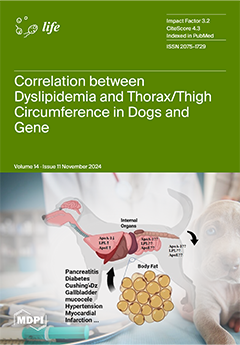This study investigates the nutritional composition and bioactive properties of
Palmaria palmata (dulse),
Ascophyllum nodosum (knotted wrack), and
Chondrus crispus (Irish moss). Understanding the nutritional values of these seaweeds is very important due to their potential health benefits, especially their antioxidant properties and cytotoxic activities, which point to their ability to inhibit cancer cell proliferation. Comprehensive analyses were conducted to assess protein content, amino acid composition, mineral profile, fatty acids, polyphenols, total carotenoids, antioxidant activity, and cytotoxicity against cervical (HeLa), and colon (HCT-116) cell lines.
P. palmata exhibited the highest protein content, while
C. crispus was richest in calcium, iron, manganese, and zinc. Amino acid analysis revealed
C. crispus as being particularly high in essential and non-essential amino acids, including alanine, glutamic acid, and glycine.
A. nodosum and
C. crispus were rich in polyunsaturated fatty acids (PUFAs), notably eicosapentaenoic acid (EPA), and docosahexaenoic acid (DHA).
A. nodosum showed the highest total carotenoid content. Polyphenol analysis highlighted the presence of compounds such as
p-coumaric acid, gallic acid, and
p-hydroxybenzoic acid across the species. Both the ethanolic and hexane
A. nodosum extracts demonstrated the strongest antioxidant potential in DPPH
• and ABTS
+ assays. The cytotoxicity evaluation revealed high anticancer activity of
A. nodosum and
C. crispus hexane extract against HeLa and HCT-116, though it employed cell cycle arrest and apoptosis.
A. nodosum hexane extract exhibited moderate selective anticancer activity against HCT-116. These findings underscore the nutritional diversity and potential health benefits of these macroalgae (seaweed) species, suggesting their suitability as functional foods or supplements, offering diverse nutritional and therapeutic benefits.
Full article






